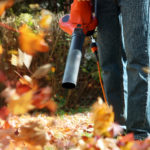There are plenty of reasons to buy a lawn mower. Perhaps the most obvious one is that it can help you keep your lawn looking neat and tidy. Mowing your lawn regularly also helps to promote healthy growth and can prevent weed problems.
There are a lot of lawn mowers to choose from on the market. How do you know which one is the best for you?
Here are a few things you need to take into account when looking for the best lawn mower for your yard. Firstly, you need to decide what type of mower you want. There are corded electric mowers and battery-operated mowers for smaller to mid-size yards; most are lightweight and easy to maneuver. Then there are gas-powered mowers best suited for larger yards; some are push, some are self-propelled, and some are riding mowers.
Power and maneuverability are important considerations. Is your yard small and flat? Get a push corded or battery-powered mower. Is your large and hilly? Get a self-propelled battery or gas-powered mower or if the yard is very, very large, get a riding mower.
There are several things to consider when making a lawn mower purchase. If you maintain your machine, it will last 10 to 15 years even with regular use, so this is a major, long-term purchase. Here’s what you need to know about lawn mowers and a list of our favorites.
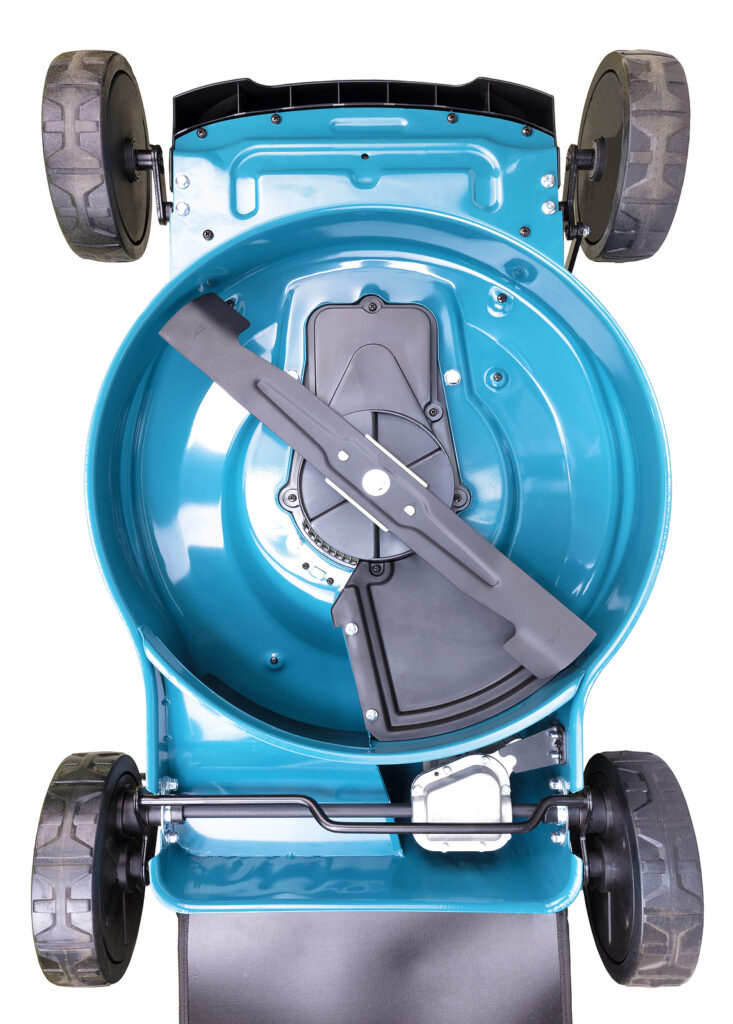
Basics to know about lawn mowers
- Most lawn mowers are rotary mowers. A rotary mower is a motor mounted on a casing (called a deck) below which rotates a propellerlike blade commonly18 to 24 inches long. The blade rotates horizontally to the ground. The motor is powered by electricity or gasoline.
- Rotary mowers can be push mowers–you push the machine, or they can be self-propelled–the wheels are turned by power from the engine. Self-propelled mowers are usually twice as expensive as push mowers. Riding mowers are very large rotary mowers, with a seat for the operator and a very large blade underneath.
- Electric mowers can be corded or cordless. Electric corded mowers are plugged into an outlet by a long outdoor extension cord. Battery-powered mowers are powered by a rechargeable battery that can run for about 45 to 60 minutes on a charge.
- Gasoline-powered mowers are driven by either a two-cycle or four-cycle engine with an average strength of 3 to 4 horsepower.
- The horizontal blades of a rotary mower rotate at fast speeds. The blades are housed within a deck or casing that keeps grass and other objects from flying away as the mower cuts.
- Deck size essentially determines how wide the blades will cut, that is the swath of the cut. Decks range from 18 to 70 inches wide. The wider the deck the larger the path or swath of the cut. Smaller decks are easier to maneuver but require more passes to cut the lawn.
- Rotary mowers can discharge grass clippings back into the lawn or into a bag. Small grass clippings (from frequent mowings) can be allowed to drop back into the lawn via a side discharge chute with no bag. If clippings are thick or clumpy the clippings should be collected in a bag or raked off of the lawn. Bagged and collected lawn clippings must be disposed of or composted.
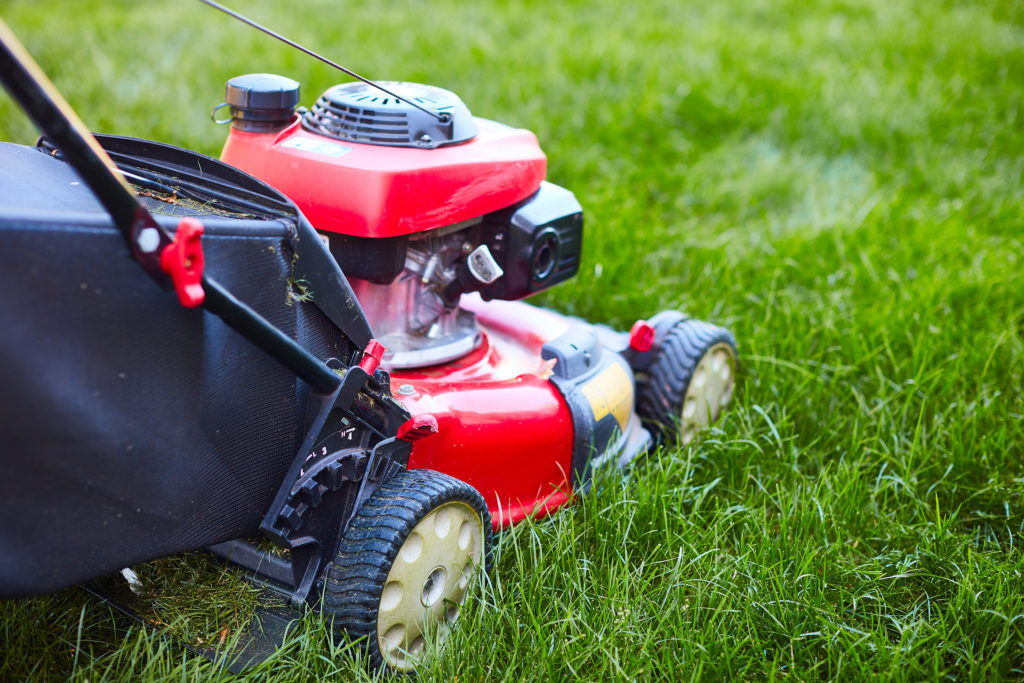
Types of rotary lawn mowers
Walk behind rotary mowers
- A walk behind or walking rotary mower is the most common type of rotary mower. Walk behind mowers can be pushed or self-propelled. The motor on self-propelled mowers turns the blades and drives the wheels.
- The cutting height on most rotary lawn mowers can be adjusted.
- Some rotary lawn mowers have flip-over handles; these mowers do not need to be turned around at the end of each pass; the handle simply flips over.
- Some rotary lawn mowers can be converted into mower-mulchers that cut the grass clippings very fine and drop them down to the soil where they act as mulch that decomposes and returns nitrogen to the soil. (If you do not cut your lawn often it is better to bag long grass clippings rather than mulch them; long clippings tend to mat and clump.)
- Walk behind rotary mowers commonly have two basic bagging designs: (1) rear bagging, in which the grass clipping are discharged into a bag that hangs from the handles of the mower behind the machine; and (2) side-discharging, in which the clippings are discharged onto the lawn or into a side-mounted bag.
Riding mowers, also called lawn tractors
- Riding mowers are self-propelled mowers that the operator sits on and drives with a steering wheel, lap bar, or levers. These mowers are used for large lawns of 3/4 acre or more.
- There are two types of riding mowers: (1) rotary types have the blade housing (mower deck) under the seat; (2) front-cut mowers have the blade housing in front of the seat; this type of mower is very maneuverable and can cut under fences, bushes, and trees.
- The width of the cuts of riding mowers typically ranges from 26 to 42 inches.
- A grass catcher–canvas, metal, or plastic container–trails along behind the mower.
- Riding mowers may include features such as a clutch, automatic transmission (hydrostatic drive), control panel, steering wheel or levers, diesel engine, engine access for maintenance, and four-wheel steering.
- A rear-engine riding mower is commonly less powerful than a front-engine riding mower and usually has a smaller cutting swath, usually a maximum width of 30 inches).
Nylon string mowers also called trimmer/mowers
- This is a large string trimmer on wheels that can be electric, battery, or gas-powered.
- These mowers use spinning nylon cords rather than metal blades to cut grass.
Self-operating robotic or “smart” mowers
- Robotic or smart mowers are electric battery powered.
- They navigate within a wire perimeter or a programmed perimeter.
- They do not cut well over uneven terrain and they can be damaged by obstacles such as large sticks.
Reel mowers
- The alternative to a rotary mower is a reel mower; a reel mower has a blade that spins vertically as it is pushed or pulled. Most reel mowers do not have motors; they are pushed by the operator and the blade spins with the momentum of the push.

Mower Pros and Cons
Electric corded lawn mowers
Electric corded lawn mowers run on electricity. They require an extension cord –usually 50 to 100 feet long–and must be plugged into an electrical outlet. Electric mowers usually have enough power for small to medium size yards–about 1/4 acre (10,890 square feet) to 1/2 acre. They must be operated within 100 feet of an outlet thus use is limited by the length of the cord.
- Pros: usually the least expensive, lightest weight, push button starts instantly, run indefinitely, no fuel, no need to re-charge batteries, quieter, no fumes, less maintenance.
- Cons: slower mowing speed, requires outlet and extension cord, range limited by the length of extension cord, the cord can become tangled around trees or other objects, potential electric shock.
- Tip: follow the device manufacturer’s instructions for selecting a compatible outdoor-rated extension cord (usually a 14-gauge or heavier 12-gauge extension). Extension cords usually max out around 100 feet.
- Cost: $100 to $300.
Cordless battery-powered lawn mowers
Cordless battery-powered lawn mowers are powered by rechargeable batteries. The batteries require a charging station that is plugged into an electrical outlet. Lithium-ion batteries are common; they provide the power and runtime for the average residential yard to about 1/2 acre. You will likely need a second battery so if the machine runs out of power before you can finish the job. Most battery mowers cut a 20- or 21-inch swath
- Pros: can cut an average yard (about a one-fifth to one-third acre) on a single charge, start instantly–no choke or pull-cord, good mobility, usually lighter than gas-powered models, less vibration than gas models, less maintenance than gas models–no oil change or tune-ups needed, the motor does not produce emissions, brushless motors and high-voltage batteries give long-lasting power, batteries may be interchangeable with power equipment from the same manufacturer, commonly have most of the features of gas-powered models.
- Cons: cost can be the same or more than a gas mower, run time is determined by the voltage and amp-hour rating of the battery (about 30 to 40 minutes of semi-continuous mowing on a single charge), battery re-charge time of about 60 minutes can slow your work, a second battery means additional cost.
- Cost: $150 to $600
Gas-powered lawn mowers
Gasoline-powered are commonly the best choice for large yards (one-fourth to one acre or more) where a long runtime or maximum power is needed; they are not limited by a cord or battery charge time. Gas mowers are available with either 2-cycle or 4-cycle engines (from 140 cc to 190 cc). Engines can be side valve designs, overhead valve designs, or overhead cam designs (listed from least to most expensive).Two-cycle engines require a gas-oil mixture to run. Four-cycle engines run on regular gasoline (the oil is separate) and are the most powerful. Four-cycle engines run cleaner than two-cycle engines. Gas mowers commonly cut a 21- or 22-inch swath and can handle thick grass and weeds.
- Pros: best for heavier work, faster mowing, big range of sizes and mowing capacities to choose from, work anywhere.
- Cons: needs fuel or fuel/oil mixtures, stepped starting procedure, heavier than most battery-powered models, noisier than battery or electric models (use earplugs or ear-muff style headsets), creates fumes, requires more maintenance (regular tune-ups, oil changes, and blade sharpening).
- Cost: $200 to $1,000.
Riding lawn mowers
Riding mowers are best suited for very large yards or estates where an extended run time is needed. Riding mowers are sometimes called garden tractors.
- Pros: cut two or three times faster than push mowers, large mowing decks–42- to 48-inch swath and up to 72 inches, most can bag, mulch, and side-discharge clippings, accept a wide range of implements such as dump carts, lawn aerators, fertilizer spreaders, lawn rollwer, tillers, seeders, snow throwers, front loaders, and backhoes.
- Cons: create exhaust emissions, requires the most storage space, and requires regular tune-ups, oil changes, and blade sharpening, bagging kits and other extras can be expensive.
- Types of riding mowers: (1) zero-turn radius mowers (ZTR) are controlled by a pair of levers, pushing one forward and the other rearward causes the mower to turn in place; easy to maneuver around obstacles; zero-turn mowers are well-suited for hilly properties; cost more than most garden tractors; recommended for lawns greater than two acres; (2) front-engine and rear-engine riders are controlled by a steering wheel, decks are narrower, about 30 inches, rear-engine mowers are usually less expensive than zero-turn radius mowers and front-engine mowers..
- Cost: $2,200 to about $8,000

Lawn mower buying tips
- Electric corded or battery-powered rotary mowers are well suited for small lawns that are mowed regularly.
- Gasoline-powered rotary mowers can cut tall or tough grasses; they are heavier duty than electric or battery-powered mowers.
- Two-cyle engines are smaller and lighter than four-cycle engines. Two-cycle engines are better for hilly terrain because they weigh less.
- Four-cyle engines are more efficient than two-cycle engines.
- Push mowers are commonly less expensive than self-propelled mowers.
- Self-propelled mowers are helpful for hilly areas or for people who find it difficult to push.
- Self-propelled mowers can be (1) front-wheel drive–best for level ground; you can push down on the handle to reduce traction on the front wheels and pivot into and out of corners; (2) rear-wheel drive–best for uphill and sidehill mowing; the rear wheels do not lose traction going up hill, and (3) all-wheel drive–best for rough and uneven ground.
- All-wheel drive self-propelled mowers offer the best traction on slopes, followed by rear-wheel drive. Front-wheel drive models are best suited for flat lawns.
- Self-propelled mowers are a better choice than push mowers (electric or gas) for large yards.
- Some gasoline-powered mowers have push-button electronic ignitions instead of pull-cord starters.
- Make sure the mower does not let the blade spin automatically at start-up; it is best that the blade is engaged by the operator. Make sure the blade engagement lever or button is easy to use.
- Some mowers can be fitted with attachments such as leaf shredders. Attachments are often add-on purchases.
- Safety features to look for include: a rear deflector, which is a hinged flap on the rear of the mower that stops flying rocks and sticks from hitting the operator; a deflection guard at the grass-clipping discharge opening; an exhaust system and muffler away from the grass catcher.
- Turning radius comparison is important (less is better).
- A washout port makes it easier to clean the underside of a mower after each use. A washout port allows you to attach a hose connection to the underside of the machine for cleaning; you do not need to tip the machine.
- Some models have a vertical-storage design that lets the handle fold down so the mower can be tipped back and stored vertically against a wall.

Lawn mower features to consider when buying
- Make sure the mower has a powerful enough engine for the lawn you will be cutting, tall grass or wet grass. Engine sizes will range from 140-cc to 190-cc; higher numbers are more powerful. Greater engine capacity is important if you get a riding mower and plan to haul a cart or use a snow blade or thrower.
- Make sure the mower is comfortable to handle; be sure the walk-behind mower handle can be set at the right height for you; make sure a riding mower seat is comfortable.
- Deck levers allow you to adjust the cutting height. Make sure the cutting height adjustment works smoothly and easily; some mowers allow for the cutting height to be adjusted by a single lever.
- Electric start models have a built-in battery and starter motor that eliminate the need to pull-start the mower. The electric start can also be flipped to instantly stop the engine. (Electric start models can cost an additional $100 more.)
- A feature called blade brake clutch (BBC) or blade override system (BOS) will allow you to stop the blades to empty the collection bag without turning off the machine. (This feature can cost an additional $100.)
- Some self-propelled mowers are available with hydrostatic transmissions; these use hydraulic fluid and are the smoothest operating and most expensive. The alternative is a belt-and-pulley system.
- Some mowers can mulch and bag clippings. Some mowers can mulch, bag, or side discharge clippings. Mulching is the healthiest alternative for the lawn; it returns nitrogen-rich clippings to the soil. Mulching does not work well where the grass is tall because clippings tend to bunch together. A mower with a side discharge is best where the lawn is tall or weedy and clippings can be collected or raked.
- Mowers with uniform wheel sizes are easier to maneuver. Models with larger rear wheels can negotiate uneven lawn surfaces–ruts and rough ground.
- Some mowers have front caster wheels which are highly maneuverable but do not track well on bumpy ground or sidehills.
- Ball-bearing wheels are easier to push than bushing-type wheels.
- Folding handles fold or collapse requiring less space for storage of walk-behind mowers.
- If you are purchasing a riding lawn mower, make sure it has a bumper to prevent damage if you strike a tree or wall.
- If you purchase a riding mower, pay extra for a built-in hour meter. Hour meters tell you when required maintenance is needed.
- A gas gauge on a mower is more convenient than a see-through tank.
- High-back seats are more supportive and comfortable than conventional seats on riding mowers.
- Some riding mower models offer cruise control.
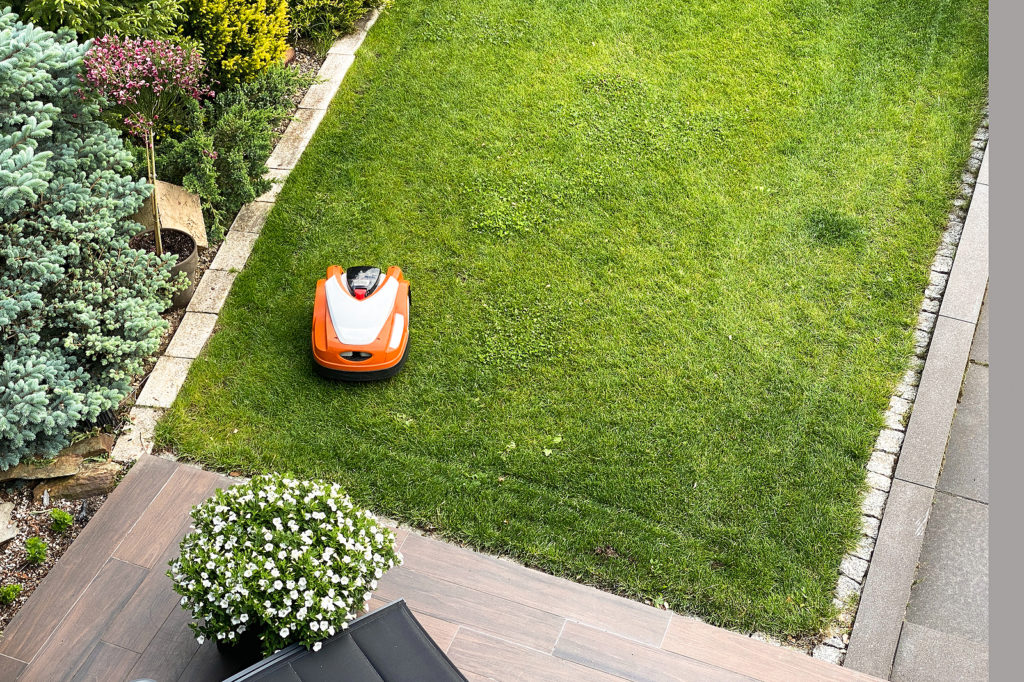
Frequently asked questions before buying a lawn mowers
Q: How powerful are battery-powered mowers?
A: Battery-powered mowers are powerful enough to mow an average yard of a quarter of an acre or less on one charge; some models can mow a half an acre on one charge.
Q: What is the difference between a push mower and a self-propelled mower?
A: Push mowers require you to push them forward. Self-propelled mowers are pulled along by a drive-train connected to either the front or back wheels. If you are mowing up inclines, a self-propelled mower is the best choice because it requires less physical effort on your part.
Q: If I choose a self-propelled mower, should I get a front-wheel drive or rear-wheel drive?
A: Front-wheel drive may lose traction on hills because the weight of the mower is behind the front wheels; the weight of the grass in the rear bag will reduce front-wheel traction. All-wheel drive mowers are available; they work best if the terrain has a severe slope. If you choose a self-propelled mower, upgrade to variable speed which will allow you to match your mowing speed to the lawn’s slope and grass conditions.
Q: Do I get more if I spend more on a lawn mower?
A: An expensive lawn mower will be of higher quality. It will have easy-rolling ball-bearing wheels, a long-lasting composite or aluminum deck (these resist grass buildup on the underside of the deck), a top-quality engine, special mulching mower blades, and both back and side discharge chute (side discharge is advantageous when the grass has grown tall.
Q: How long will a lawn mower last?
A: If you maintain the lawn mower and follow the manufacturer’s operating instructions, a lawn mower can last 10 to 15 years. Consider a lawn mower a major purchase.
Q: How long does a lawn mower battery last?
A: The rechargeable battery on an electric mower should last about 5 years. The battery on a riding mower will last about 4 years.
Q: How often do I need to change a lawn mower spark plug?
A: Replace the spark plug at the start of each new mowing season or after about 100 hours of use.
Lawn mower safety tips
- Read the owner’s manual and manufacturer’s safety tips before operating the machine.
- Do not remove shields, guards, and other safety features on the machine.
- Add fuel before starting the engine.
- Clear the mowing area of sticks, twigs, stones, pet droppings, and toys before mowing.
- Wear protective gloves, goggles, sturdy shoes, and long pants when operating the mower.
- Do not mow the lawn at night.
- Do not cut the grass when it is wet or damp or when it is raining.
- Use caution when mowing hills and slopes. It is usually safer mowing across a slope than up and down.
- Do not leave the mower unattended while it is running. Turn off the engine if you must step away.
- Do not let children operate the mower without close adult supervision.
- Do not let children or adults ride as passengers on a riding mower.
- Keep your hands clear of a hot engine, exhaust manifold, or gas tank.
- Remove the spark plug when storing or doing maintenance on the lawn mower.
- Always keep your hands and feet away from the mower blade even when the machine is not running. Do not lift the machine by the underdeck where your hands can be injured by the blade if it turns unexpectedly. Use gloves to handle the blade during maintenance.
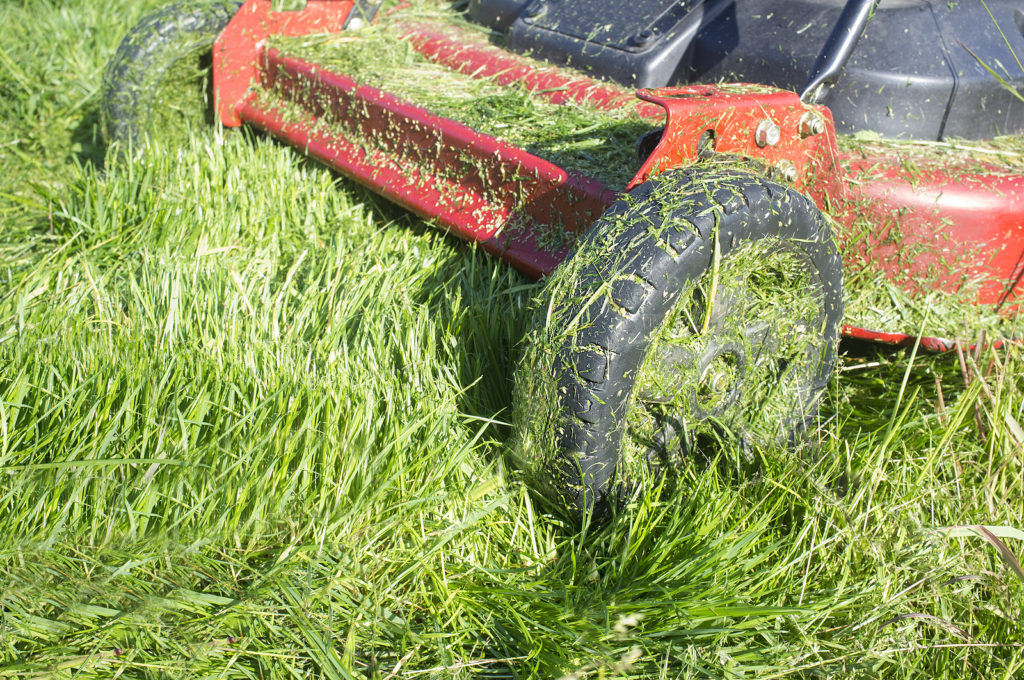
Lawn mower maintenance
Electric and battery-powered mower maintenance
- Read the owner’s manual and follow the maintenance schedule.
- Unplug the power cord or remove the battery before maintenance.
- Check the power cord or batteries for damage before each use.
- Clean the deck after each mowing. Use a garden hose or clean cloth to clean under the deck.
- Clean and check the blades after each use. Remove blades before sharpening them.
- Check the hardware and fasteners before each use.
Gas-powered mower maintenance
- Read the owner’s manual and follow the maintenance schedule.
- Check the hardware and fasteners before each use.
- Check the oil before each use. Change the oil annually. Dispose of oil at a recycling center.
- Replace the spark plug annually.
- Drain the gasoline at the end of the season or run the engine until the remaining gas is used up.
- Use a gas stabilizer if you leave gas in the machine for long periods.
- Clean and replace the air filter once a year.
- Remove grass from under the mower deck and clean it with a clean cloth after every use.
- Sharpen the mower blades at least once a year and replace them if they are damaged.
- Balance the mower blades once a year; see the owner’s manual for instructions.
Shopping list
- Electric corded lawn mowers
- Battery-powered lawn mowers
- Gas-powered lawn mowers
- Riding lawn mowers
- Robot lawn mower
- Reel mowers
- String mowers
More Buyer’s Guides


